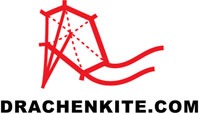Scott Skinner
Discourse-Issue-23
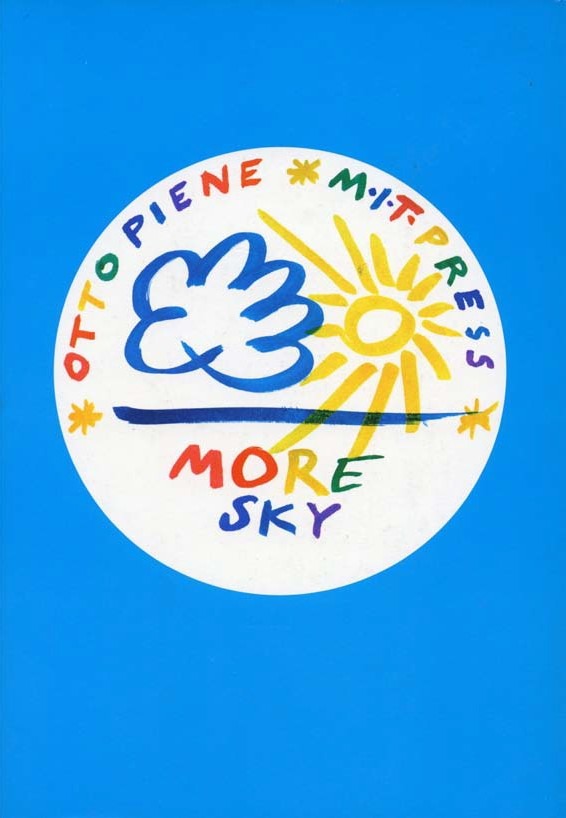
Otto Piene/MIT Press
I don’t know how this understated paperback found its way to my bookshelf. I’ve walked into some great bookstores in every part of the country, including Powell’s in Portland, Tattered Cover in Denver, and Ken Sander’s Rare Books in Salt Lake City, to name a few. My memory is fuzzy, but More Sky might have been a Ken Sanders purchase, and I’m surprised and impressed every time I take it off the shelf and leaf through its pages.
Otto Piene was the first Fellow of the MIT Center for Advanced Visual Studies in 1968 and was a pioneering figure in multi-media and technology-based art. For readers of Discourse, you might have noticed his name in Clara Wainwright’s wonderful recollection of the Great Boston Kite Festival of the late 1960s. In fact, Piene mentions the event in More Sky: “The Boston Kite Flying Festival in Franklin Park united thousands of people and, when I experienced it, produced much joy, few words, little theory, and no scholars, except as people.”
In More Sky, as explained on its flyleaf, Piene “covers ‘things to do’ arranged alphabetically, A- M,… Like city planning, clothing, collaboration or electronic music, elements, engineering or government, graffiti, graphics, green toad jelly.” In fact, this book covers only A through M and I’m unaware of another volume that tackles N through Z. In this case, “half a loaf” is more than enough to sustain those of us who attempt to use the sky as our canvas. Illustrated by whimsical drawings, the book describes “some of the things that man the artist can do to purify the skies polluted by man the moneymaker and rendered fearsome by man the war-maker.”
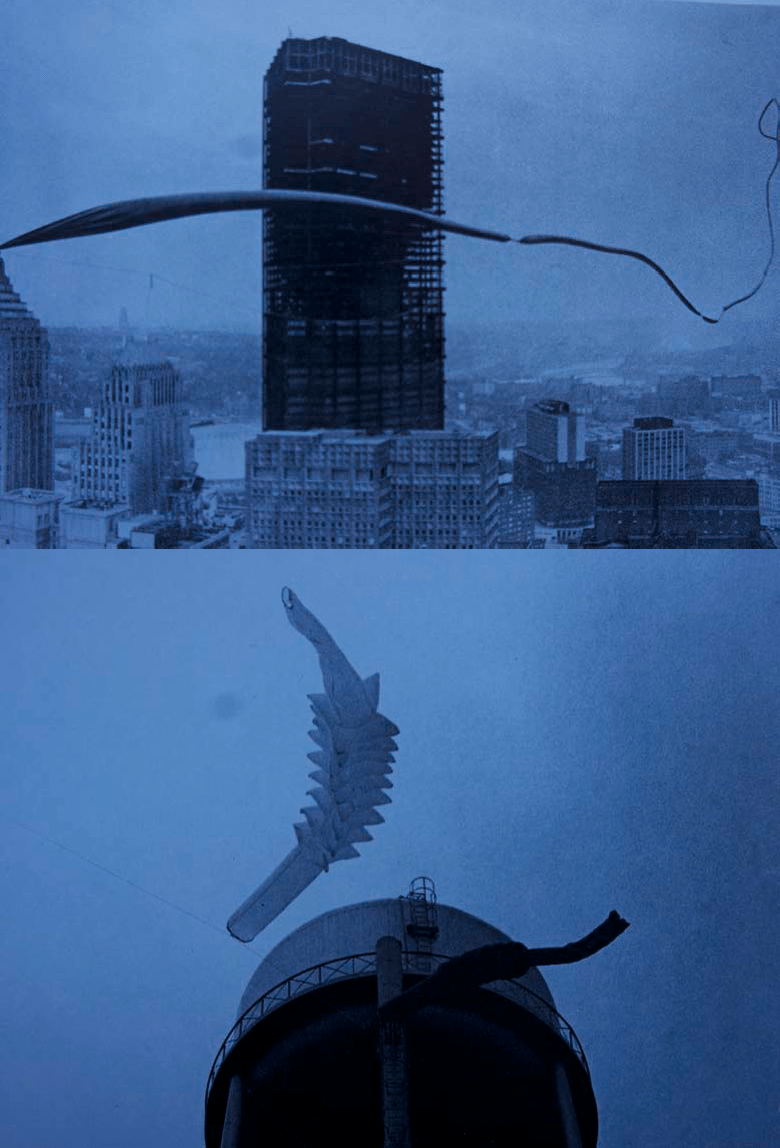
Otto Piene/MIT Press. Two large-scale inflatables by artist Otto Piene.
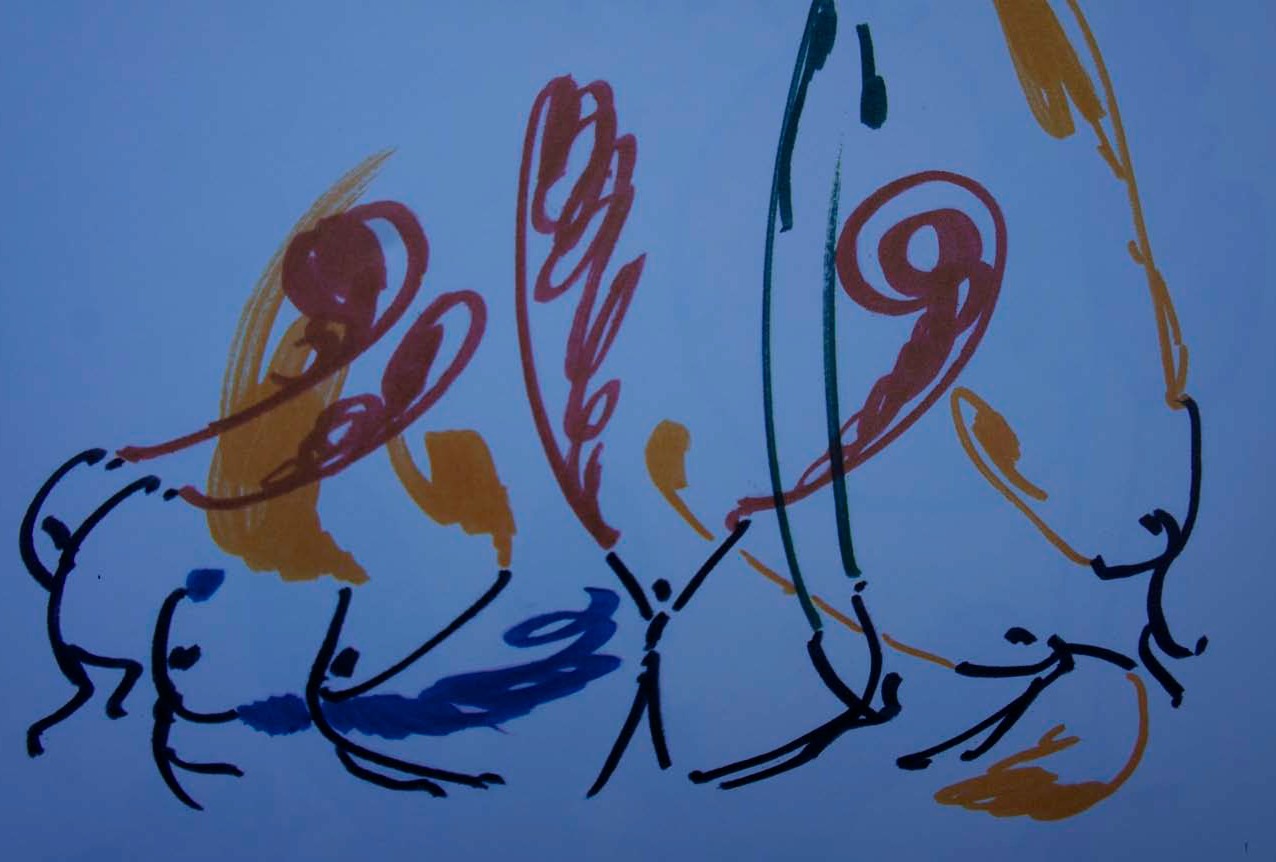
Otto Piene/MIT Press. “Dancers” drawing from Otto Piene’s More Sky book.
Before speaking about some of Piene’s ideas – A-M rather than A-Z – let me borrow some of his words from the book’s preface. He makes the point that “the artist is still a person trained and willing to shape small or large objects, stretches of land, small or large portions of the environment, small or large portions of open minds. Aside from expressing spirit through matter and using the senses as doors to the mind, the artist has another subversive talent: the ability to express maximum ‘content’ by minimum means. He makes something out of nothing, or nearly nothing. The artist can be considered a brilliant economist.” He concludes, “I am happy to concede that… there may be a little room for ‘art’ and its habitual ways or the traditional hokus-pokus of an ‘art world.’ Ideally the art world will turn into a world of art where everything means something, in which there will be enlightenment of the artist, as well as of his audience, beyond becoming famous, beyond wielding power, beyond charming the mod masses.”
It’s unfair to pull selected “letters” out of Piene’s artistic alphabet, but I’d love to mention a few that might be of particular interest to kite artists and anyone using the sky as canvas.
C – Conventions. The outcry against conventions has become conventional.
D – Dance. I am now curious about how human dancers might interact with huge, artificial, inflated, mobile dancers.
E – Environment. How healthy it would be if we had Niagara Falls instead of Rockefeller Plaza. A most dramatic
environmental event: the 1965 New York blackout. Imagine if, when the light returned, it had been blue.
F – Flagpoles. Can hold flags, banners, ribbons, fish kites, wind-socks, wind puppets, and combinations thereof – wind sculptures for good weather and bad.
F – Flight. I do not think it is by accident that we are told repeatedly that soaring and parachuting come closest to art experiences.
G – Green Toad Jelly. The sense of poetry and the sense of the absurd that the artist has to maintain.
K – Kinetic Sculpture. Kinetic art is inherently a social art. It is mature enough to expand, to live without the babblers, and to address open minds everywhere. I find it significant that kinetic art has had a special appeal to children for a long time.
Can the same be said about kites?
Finally, I love what Piene says about kites:
“The freedom of art and artists is still severely restricted by the artists’ common habit of regarding their own navels. Art in general has spent a lot of time and effort looking at its own navel. In order to reorient artists’ concern and to reestablish touch with and influence on life, we raise our eyes and look at the world beyond the limits on ‘art,’ and we study subject matter that is not in the files of art history.”
Read more about Otto Piene at listart.mit.edu/node/693#.U2Jq1-A1fww. A simple search of “Otto Piene” will find several sites of wonderful images from Piene’s work. ◆

Otto Piene/MIT Press. “F – Flagpoles. Can hold flags, banners, ribbons, fish kites, wind-socks, wind puppets, and combinations thereof – wind sculptures for good weather and bad.”
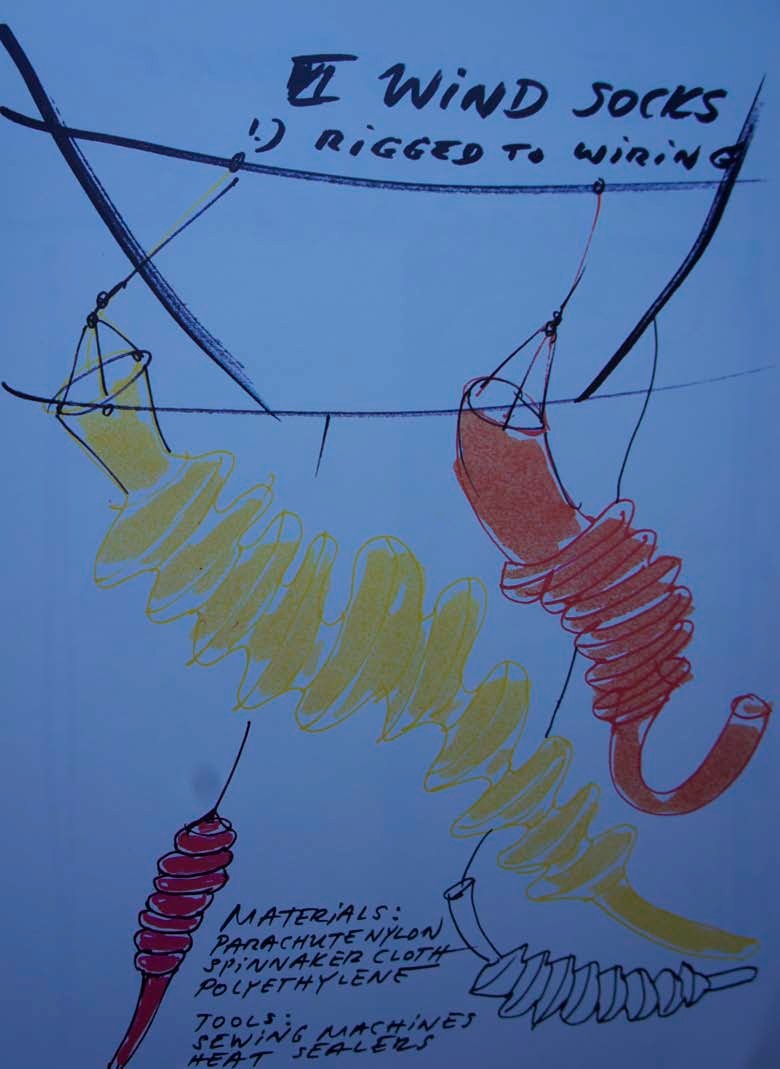
Otto Piene/MIT Press. “In order to reorient artists’ concern and to reestablish touch with and influence on life, we raise our eyes and look at the world beyond the limits on ‘art’…” – Otto Piene
